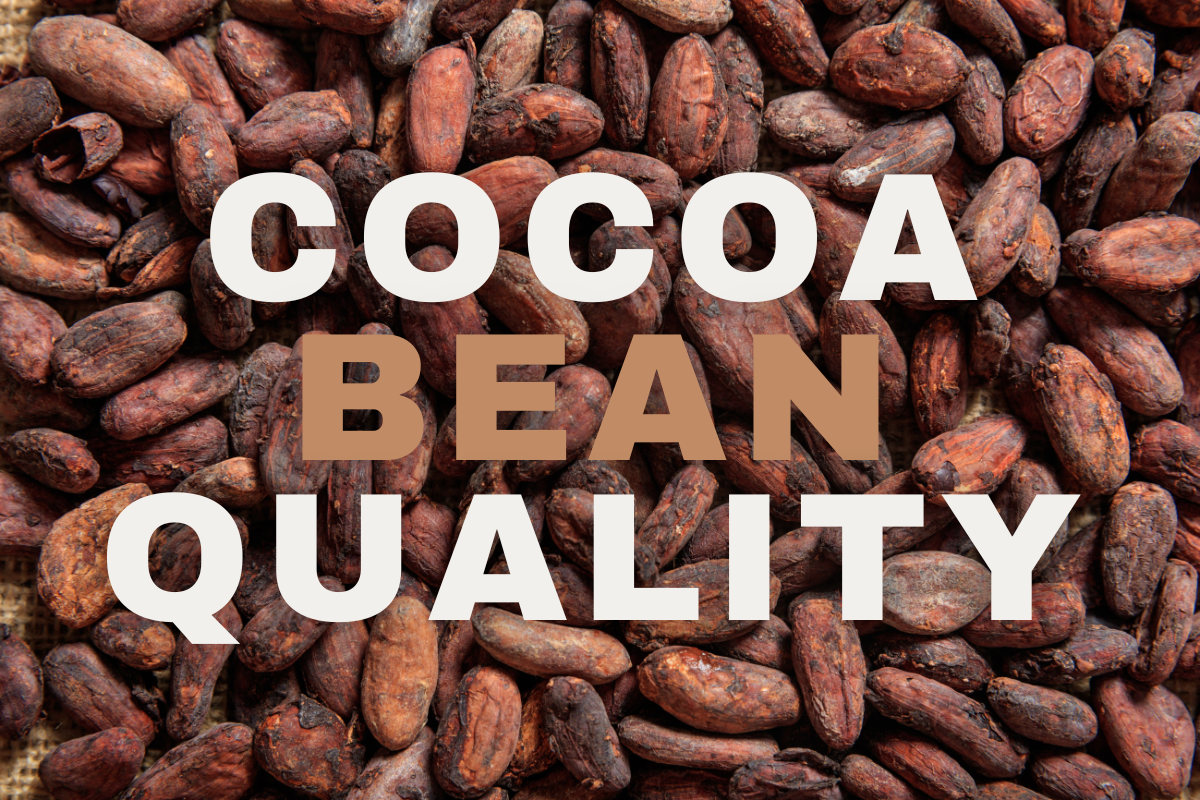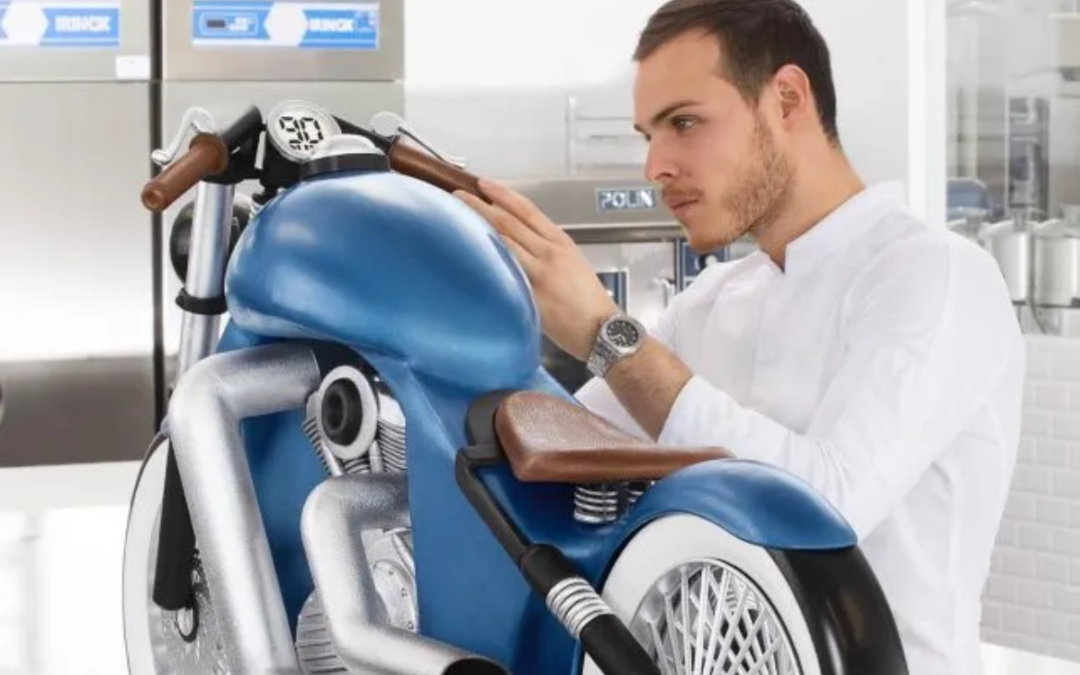Quality cocoa beans are key to creating great chocolate. So, knowing how to assess the quality of cocoa beans is crucial. High-quality beans lead to better flavor, fewer off flavors, smoother texture, and an overall superior chocolate experience.
In this article, we’ll explain the important steps in checking cocoa bean quality, from looking at their appearance to tasting them. By learning these simple techniques, you can make sure your cocoa beans are high quality ensuring the best possible results in all your chocolate-making projects.
Why is checking cocoa bean quality important?
The quality of the beans has a direct impact on the flavor of the final chocolate (there are certainly other steps that also have a significant impact on flavor, such as roasting, but starting with high quality, fine-flavor cocoa beans is an important start point). Superior beans have richer, more nuanced flavors, while lower-quality beans can lead to chocolate that tastes bitter, sour, moldy or just unbalanced.
- Maintaining consistent quality guarantees that every batch of chocolate delivers a consistent high-quality product. This is particularly vital for chocolate makers and chocolatiers who must meet customer expectations for reliability and excellence. This can also be important to home makers who don’t want to disappoint their families!
- High-quality beans are simpler to work with and less prone to defects, which helps streamline the chocolate-making process and reduces the time and resources required for production. Sorting out bad beans can be a time consuming process. Low quality beans can also roast unevenly and add a burnt or bitter flavor to your chocolate.
- Quality beans are less likely to harbor mold, pests, or other contaminants that could compromise the product or shorten its shelf life.
- Premium-quality beans, such as single origin or unique varietals, can command higher prices when selling to the consumer market, providing greater returns for both farmers and producers.
Impact on flavor and aroma
The quality of cocoa beans significantly influences the flavor and aroma of the resulting chocolate. The genetic makeup of the beans determines their inherent flavor profiles, with high-quality beans often coming from superior varieties.
Also, proper fermentation is crucial for developing rich, complex flavors, while careful drying and storage prevent mold and other contaminants that can degrade taste. The chocolate processing methods, including roasting, further enhances (or diminishes) the beans’ natural flavors.
Additionally, high-quality beans are considered free from flavor defects, ensuring the final chocolate doesn’t have undesirable taste. Is important to understand that every stage of chocolate production, from bean selection to processing, helps achieve the best flavor, texture and aroma.
Steps to check the quality of cocoa beans
- Visual Inspection – Inspect the beans for any visible defects.
- Size and Shape Analysis – High-quality cocoa beans usually have a consistent size and recognizable shape.
- Color and Appearance Inspection – Check the overall color of the beans. The color should be consistent throughout the beans. Black spots or streaks could suggest problems with fermentation or drying.
- Internal Examination – The interior of the beans should be examined. Beans can be cracked open by hand to check inside. A cut test may also be performed. The nibs (the edible part) should be inspected for evidence of mold and any unusual colors.
- Smell Test – Smell the beans to ensure that they have a fresh smell and a strong scent of rich chocolate.
- Taste Test – To check the quality more closely, roast a few beans and taste the nibs. Good beans will have a smooth, rich cocoa flavor without any harsh bitterness or strange tastes.
- Lab Tests – Cocoa beans should be tested in a laboratory to ensure that they meet desired quality standards.
Detecting cocoa bean defects and assessing quality
Detecting defects and contaminants in cocoa beans is crucial for ensuring high-quality chocolate production. Here are some key methods to identify issues:
- Visual Inspection: Examine the beans for visible defects such as mold, insect damage, broken or unripe beans, and foreign matter. Healthy beans should have a uniform color on the outside and be free of cracks or discoloration. There shouldn’t be an excessive number of flat beans or beans stuck together. Also, check the beans for evidence of sprouting or germination (this will leave a hole at one end of the bean which can be a source of pathogen introduction).
- Size and Shape Check: Small differences in bean size are normal, but big variations can impact processing and flavor, particularly during roasting where small beans may be over-roasted or large beans may end up under-roasted. The shape of the beans should match their designated type; for instance, some varieties are more rounded or oval. Know your beans and make sure that you are actually getting what you are paying for.
- Fermentation Check: Inspect the exterior of the beans for signs of proper fermentation, such as a brown-tan color and a slight sheen. Under-fermented beans may appear pale or greenish, while over-fermented beans may be overly dark or blackened.
- Cut Test: Slice open a sample of 25-50 beans to check the interior (a cocoa bean guillotine makes this fast and easy, but they are not cheap). The inside should be evenly brown colored, without dark spots, mold, or signs of insect infestation. This test can also reveal under-fermented (purple tones) or over-fermented beans. The beans should also have a nice pattern of fissures in the bean. The interior of the beans should be firm and a bit oily. If the beans are too dry or crumbly, it could mean they’ve been over-dried.
- Aroma Check: Smell the beans to detect any off-odors, such as mustiness or sourness. Beans with a musty, sour, or unusual smell might be poorly fermented or contaminated. All the beans should have a similar, pleasant aroma. Different smells could mean there are problems with how the beans were processed, handled or stored. A vinegar smell is normal as long as it isn’t too intense.
- Float Test: Place the beans in water; defective beans often float due to being hollow or damaged, while healthy, well-fermented beans will typically sink.
- Moisture Content Test: Measure the moisture content of the beans using a moisture meter. Beans with high moisture levels are more prone to mold growth and spoilage. Ideal moisture content is usually around 6-8%.
- Laboratory Testing: For more precise detection, lab tests can identify specific contaminants like aflatoxins, pesticides, and heavy metals (lead and cadmium). These tests ensure that the beans meet safety and quality standards.
For more great articles and recipes, check out the rest of our CocoTerra blog.
If you have any questions or comments, feel free to contact us through our social media channels. We are @cocoterra_co on Instagram and Pinterest and @cocoterraco on X (aka Twitter) and Facebook.








